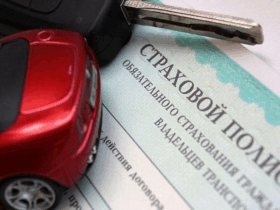Your guide to trademarks in Belarus. Learn about the registration process with NCIP, enforcement strategies, and how to protect your brand under Belarusian law. Expert insights from the Law firm «Economic Disputes».
As Belarus solidifies its position as a strategic hub for business and trade in Eastern Europe, international companies are increasingly looking to enter this promising market. In this expansion, no asset is more critical than a company’s brand—its identity, its reputation, and its promise to the consumer. The legal shield that protects this asset is the trademark. However, navigating the landscape of intellectual property in a new jurisdiction can be a complex endeavor, fraught with procedural nuances and potential pitfalls. Simply assuming that a trademark registered elsewhere is automatically protected in Belarus is a common and costly mistake.
What Exactly Constitutes a Trademark Under Belarusian Law?
Before delving into the strategy of protection, it is essential to understand what the law itself defines as a protectable asset. Under the primary legislative act governing this sphere—the Law of the Republic of Belarus «On Trademarks and Service Marks»—the definition is both precise and encompassing. A trademark – is a designation that serves to distinguish the goods of one legal entity or individual entrepreneur from the homogeneous goods of others. This core function of «distinction» is the cornerstone of trademark law. The legislation allows for a wide variety of designations to be registered, including verbal marks (words, names, slogans), figurative marks (logos, images), three-dimensional marks (the shape of a product or its packaging), as well as less conventional marks like sounds or colors. This broad definition provides businesses with flexible tools to protect the unique elements of their brand identity.
Why is National Registration in Belarus Crucial for Your Business?
A fundamental principle of intellectual property law is territoriality. This means that trademark rights are geographically limited to the territory of the state where they have been granted. A trademark registered in the European Union, the United States, or China offers no legal protection within the borders of Belarus. This reality creates significant risks for foreign companies that enter the market without securing national protection first. One of the most common threats is «trademark squatting,» where a third party registers a well-known foreign brand in their own name with the intent to sell it back to the original owner at an exorbitant price or to block their market entry. Furthermore, without a registered trademark, a company has no legal standing to combat counterfeit goods, initiate customs actions to block infringing imports, or legally license its brand to local partners or establish a franchise network. In essence, operating without a registered trademark is akin to building a house without a foundation—the entire structure of your business in the region remains vulnerable.
How Does the Trademark Registration Process Work in Belarus?
The administrative body responsible for the examination and registration of trademarks in Belarus is the National Center of Intellectual Property (NCIP). The registration process is a systematic procedure that consists of several key stages, each with its own timeline and purpose. The journey begins with the filing of a formal application with the NCIP, which must contain a representation of the mark, a list of goods and services for which protection is sought (classified according to the Nice Classification), and details of the applicant. Following the submission, the application undergoes a formal examination, typically within a few months, where the NCIP verifies that all necessary documents have been submitted and procedural requirements are met.
Once the formal requirements are satisfied, the application proceeds to the most critical and lengthy stage: the substantive examination. During this period, which can last up to a year or more, an NCIP examiner conducts a thorough analysis to ensure the proposed trademark complies with the legal requirements for registration. The examiner checks the mark against both absolute and relative grounds for refusal. If no grounds for refusal are found, the NCIP issues a decision to register the trademark. After the payment of the registration fee, the trademark is officially registered in the State Register of Trademarks and Service Marks, a certificate is issued to the owner, and the information is published in the Official Bulletin, solidifying the owner’s exclusive rights to the mark for an initial period of ten years, with the possibility of unlimited subsequent renewals.
What are the Absolute and Relative Grounds for Refusal?
Understanding the potential reasons for refusal is key to a successful registration strategy. The substantive examination focuses on two categories of obstacles. Absolute grounds for refusal relate to the inherent characteristics of the trademark itself. A mark will be rejected if it is devoid of any distinctive character, such as a simple geometric shape or a single letter. It will also be refused if it is descriptive, meaning it consists exclusively of signs that indicate the kind, quality, quantity, or other characteristics of the goods (e.g., registering the word «SWEET» for candy). Furthermore, marks that could deceive the consumer regarding the product or its manufacturer, or that contradict public interest, principles of humanity, and morality, are also barred from registration.
Relative grounds for refusal, on the other hand, relate to the conflict of the proposed mark with the prior rights of third parties. This is the most common reason for rejection. The NCIP will refuse registration if the trademark is identical or confusingly similar to trademarks that have been previously registered or filed for registration in Belarus in the name of another person for similar goods. This check also extends to well-known marks, protected industrial designs, copyrights, and business names of other entities. Overcoming a potential refusal on relative grounds often requires sophisticated legal arguments, letters of consent, or strategic limitation of the list of goods and services.
What is the Single Most Important Step Before Filing?
Based on our extensive experience in handling trademark applications, there is one preliminary step that is frequently underestimated but has the power to save an applicant significant time and money: conducting a professional preliminary search. Before investing in the official filing fees and initiating the lengthy examination process, it is highly advisable to conduct a comprehensive search of the Belarusian national trademark database. This search aims to identify any identical or confusingly similar marks that have already been registered or filed and could serve as a basis for refusal. A thorough search provides a clear picture of the registration landscape, allows for an assessment of the chances of success, and gives the applicant an opportunity to modify their mark or strategy before committing significant resources. This proactive, relatively inexpensive step is a crucial element of risk management in the registration process.
Can You Secure Priority Rights Before Official Registration?
A little-known but vital tool for international applicants is the right of priority, established by the Paris Convention for the Protection of Industrial Property, to which Belarus is a party. This mechanism is especially valuable for companies that are launching their brand in multiple countries simultaneously. The convention stipulates that if an applicant files a trademark application in any member country, they have a period of six months to file an application for the same mark in any other member country while claiming the filing date of the first application. This «priority date» is legally significant because it means that any applications filed by third parties for a similar mark in Belarus between your first filing date and your Belarusian filing date will be considered as filed later than yours. Claiming priority is a powerful strategic tool that protects a brand during its international rollout phase.
How Do You Enforce Your Trademark Rights in Belarus?
Registration is the first step; enforcement is the second. Owning a trademark certificate is meaningless if you are not prepared to defend your rights against infringers. The Belarusian legal system offers several avenues for enforcement. The first step is typically a pre-trial action, such as sending a formal «cease and desist» letter to the infringer, demanding they stop the illegal use of your trademark. If this does not yield results, the rights holder can pursue administrative action by filing a complaint with the Ministry of Antimonopoly Regulation and Trade (MART) on the grounds of unfair competition.
The most powerful tool, however, is judicial action. A trademark owner can file a lawsuit with the economic courts of the Republic of Belarus. The specialized judicial panel of the Supreme Court of Belarus handles intellectual property cases, ensuring a high level of expertise in these disputes. The court can grant various remedies, including an injunction to prohibit further infringement, the recovery of damages or compensation, and the seizure and destruction of counterfeit goods. A robust and proactive enforcement strategy is essential to maintaining the value and integrity of a registered trademark.
Why is Navigating the Belarusian IP Landscape a Task for Experts?
As this guide illustrates, securing and protecting a trademark in Belarus is not a mere administrative formality. It is a complex strategic process that requires a deep understanding of national legislation, NCIP examination practices, and the intricacies of judicial enforcement. Every stage, from the preliminary search to litigation, is filled with nuances where a misstep can lead to refusal of registration or the failure of an infringement claim. Template solutions are ineffective; what is required is a tailored strategy built on experience and specialized knowledge.
This is precisely the value offered by the Law firm «Economic Disputes». Our approach is built on a foundation of profound experience. Our lawyers possess 15-25 years of professional experience, with a deep focus on economic and intellectual property disputes. Our firm’s director, Sergey Belyavsky, brings an unparalleled perspective, having served for 20 years in the economic court system, including 10 years as a judge. This insider’s understanding of judicial reasoning is invaluable when building a case that is destined for court. He is also a recommended arbitrator at the International Center for Arbitration and Mediation at the Belarusian Chamber of Commerce and Industry (ICAC at the BelCCI) and a recognized thought leader, with 5 books and over 1200 articles to his name.
Our team of 15 lawyers and specialists allows us to handle the most complex cases swiftly and effectively. We understand the needs of our international clients, which is why we operate fluently in English and Polish. Our established network of partners in over 40 countries and our own corporate bank account in Poland (PKO Bank Polski) ensure seamless and efficient cross-border cooperation and transactions. With over 1500 clients served and more than 100 positive reviews, our track record speaks for itself.
Protecting your trademark in Belarus is an investment in your brand’s future success in the region. To develop a tailored registration and enforcement strategy that aligns with your business goals, we invite you to contact us for a consultation through the form on our website, https://e-sud.by/. Let our experience be your shield.








Оставить ответ